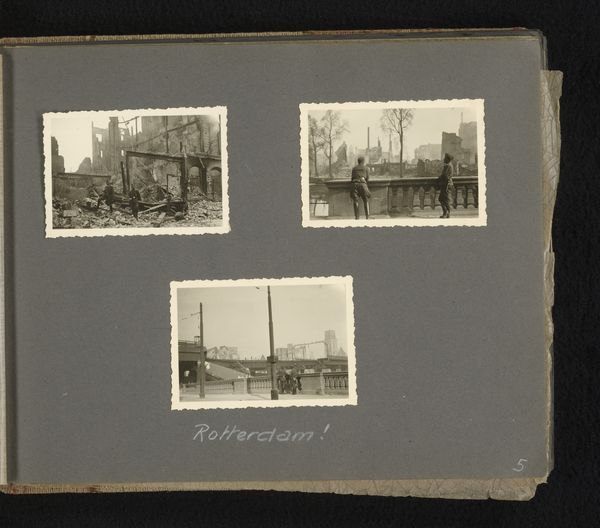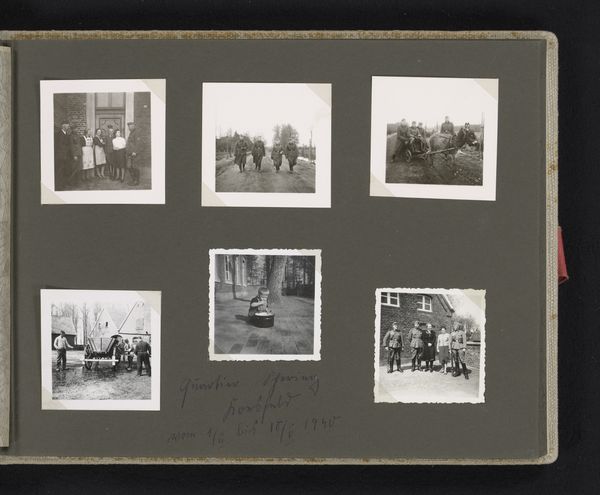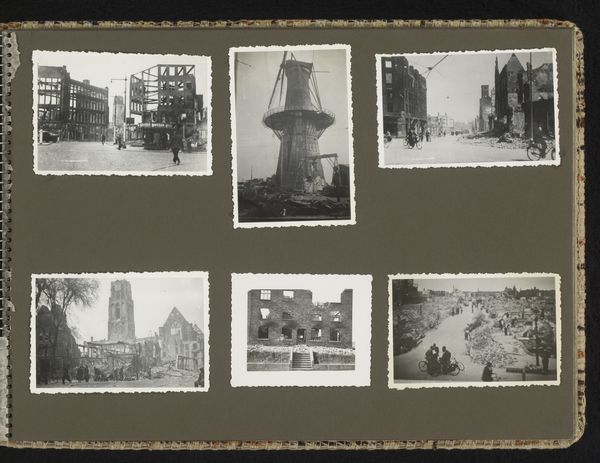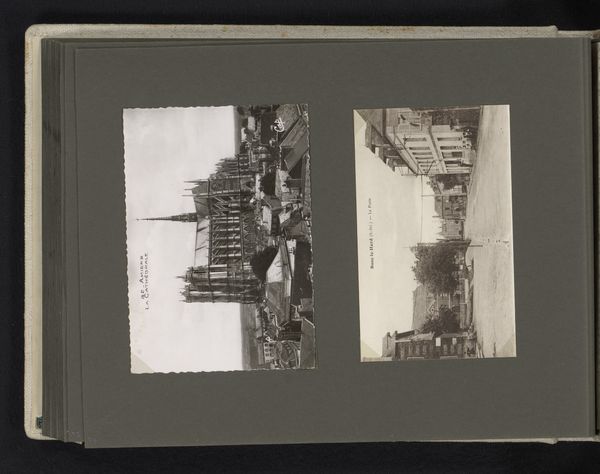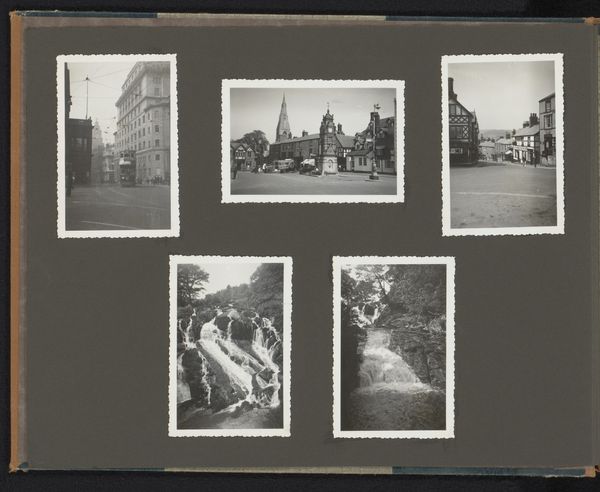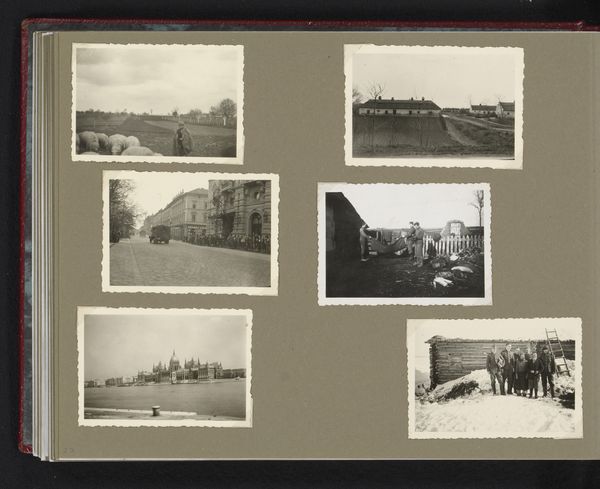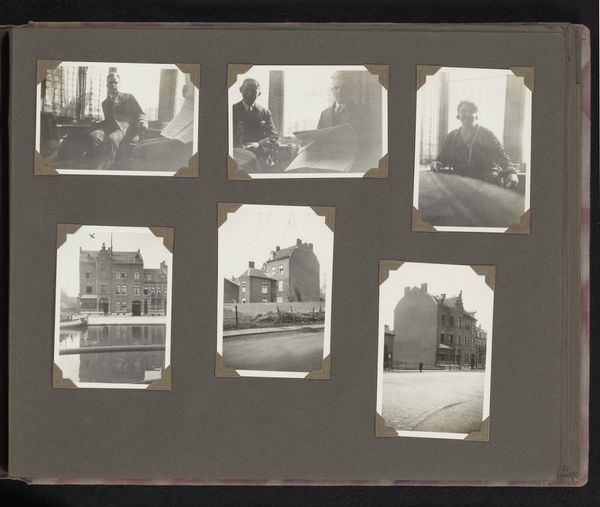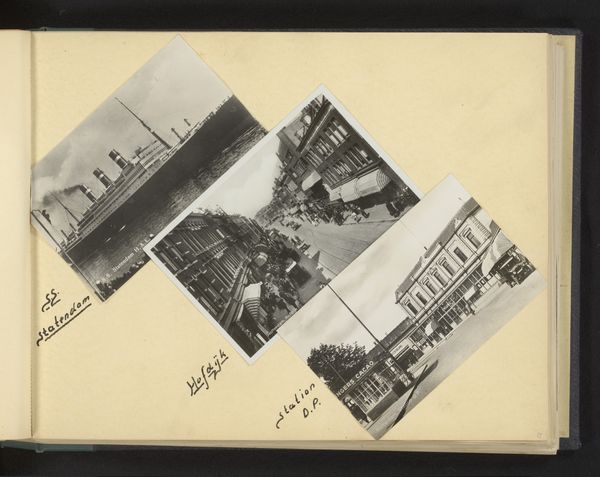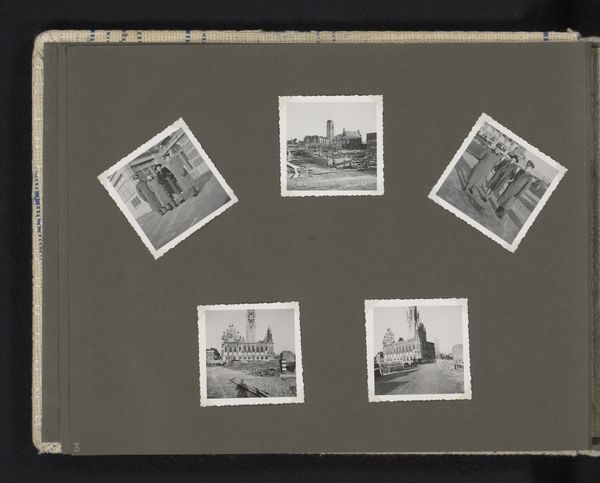
photography, gelatin-silver-print
#
portrait
#
dutch-golden-age
#
landscape
#
street-photography
#
photography
#
gelatin-silver-print
#
cityscape
Dimensions: height 60 mm, width 60 mm, height 245 mm, width 310 mm
Copyright: Rijks Museum: Open Domain
Curator: Before us, we have "Amsterdam en Zaandam," an intriguing gelatin-silver print likely crafted between 1941 and 1942. The Rijksmuseum is fortunate to hold this. What are your initial impressions? Editor: The grouping of these small, monochrome images creates a certain somber atmosphere. It resembles a carefully preserved collection, perhaps hinting at memory and reflection in times of hardship. Curator: Indeed. The visual syntax of these images is interesting. Note the contrasts within each shot; observe, for example, the architectural linearity juxtaposed against the flowing reflections in the canals. There's a deliberate play with form. Editor: I'm struck by the mundane reality they depict: canals, architecture, streets, and even an individual seated at what appears to be a table. There is no drama; instead we are invited to appreciate daily life in Amsterdam, captured using a tangible photographic process. This physicality is paramount to appreciating the artist's skill, using limited resources to document something precious. Curator: Precisely, the medium and execution offer insight. The limited tonal range in each square contributes to a sense of visual coherence across all photographs, despite their various locations. Editor: And given that it was produced during a dark period of occupation, doesn't it challenge preconceived notions about artistic production during such turmoil? Everyday scenes like this were important for solidarity and a sense of national identity. Preserving the familiar amongst potential erasure feels crucial to me. Curator: A potent perspective. The frame or, in this case, scrapbook adds another layer of consideration. A personal artifact containing organized and thoughtfully curated views of specific places within Amsterdam. Editor: Looking at it with fresh eyes now, I recognize how it is all bound by something tangible and personal that echoes the materiality of making—photography, bookbinding, ink—rather than adhering to academic precepts. Curator: Yes. Let us acknowledge this piece for how the sum of its formal and historical details create layers of experience beyond a singular landscape, but collective meaning. Editor: An exercise of recording the simple pleasures. In dark times like these, materials and photographs bear the weight of defiance and communal identity.
Comments
No comments
Be the first to comment and join the conversation on the ultimate creative platform.
